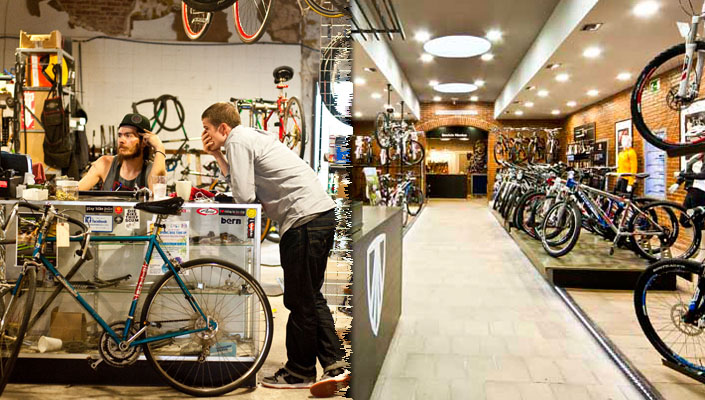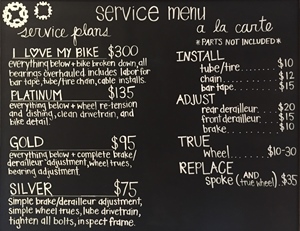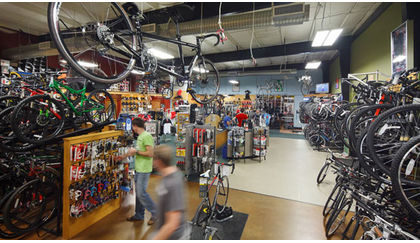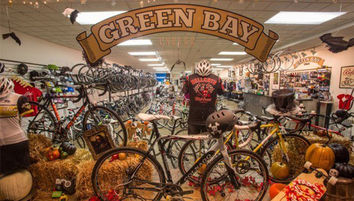
1. Cut Your Supplier List in Half
Simplify, focus, and make your bike store more efficient to run by cutting your supplier list in half. Improve your freight to invoice ratio, time spent with reps (quality, not quantity), accounts management, and simplify your purchasing processes. You simply don't need many more than 7-8 suppliers, tops. But always start by imagining you can only have four and then justify any additional suppliers purely based on necessity and value-add to your business.
2. Then Renegotiate

Now it's time to call meetings with your preferred 'core' suppliers and re-set, or at least review, your relationship settings. Tell them how much you typically spend per category each year and the categories/brands you are considering supporting or continuing with from them. Estimate the total value of that spend per annum that could come their way, and that for the 100K, 300K, 1MIL - whatever the figure is, you as a business have minimum supplier expectations on things like service frequencies, co-marketing investment, free POS/merchandising support, freight concessions, best pricing across the board, etc. If they say 'yes', then great. Make it so. If they don't, tell them you respect they have a business to run and they have their own protocols and priorities, but so do you. Remind them you also have alternatives (which there always are) and that you're very happy to change core suppliers if necessary. The aim should always be for a more profitable, mutually beneficial relationship. You are a customer, too. Never devalue your bargaining power, especially during a time when the traditional supply model is being challenged and when there is more competition than ever for wall and floor space in IBD retailers.
3. Upgrade Your RMS Software
Investing in a modern Retail Management System will help your business become more efficient, easier to run, and more profitable. A modern RMS will be integrated with your e-commerce, accounting, inventory management, RFID scanning, workshop costings, CRM, EDM, social media comms, and have numerous affiliated bolt-on programs to solve everything from staff rostering, rewards programmes, marketing automation, and more. Being in 'the cloud', your vertically integrated, multi-channel business will now no longer be bound by the limitations of bricks and mortar. You can sell at events or pop-up retail sites, manage your business from the airport lounge or during your bunch café stop - and all the while, your sales, inventory, and accounts will be instantly adjusted and recorded back at base like you were standing there.
4. Get a Plan!
Reason being a frightening percentage of you simply don't have one. Not for sales, consumer promotions, purchasing budgets, social media messaging, EDM, content marketing. Nothing. What's having a 'plan' got to do with improved profitability? Everything. Having budgeted sales and marcomms plans means you will have the right stock, at the right time, in the right quantities, at the best price, and your target customers will know about it at the right time, through the right channels, and be motivated to come in or log on and buy that stock at the price you will make the most profit on - not 6 months later when you're giving it away at or below cost. And that's just the start of why. Maybe start with "What am I going to do to generate income and customer engagement during the typical slow periods this year?"

5. Invest in your 'Value'
'Value' is defined by what people will reasonably pay for a product or service. Whether something is considered to be 'good', 'fair', or poor' value will be determined by 'Price' in relation to the product or service provided. 'Good' value is when the product or service is cheaper than valued. 'Fair' is the level at which it is reasonably valued. 'Poor' is above what the product or service is valued at. Do not confuse 'price' with 'value'. Set your prices based on what is considered to be 'fair' value, not more and certainly not less. Unless you are tactically discounting to drive traffic or win market share. The more you invest in service, support, delivery, customer experience, presentation, image, reputation, etc., the higher that 'value' point will be, and hence the more profitable you can be.
6. Code and Value Your Services Like Products

image: pedalchicnashville.com
Make a list of every function, action, or service you carry out in the workshop and give it a product code and price. Enter this list into your RMS. Just like your car service center does, be sure to enter every action or service on to your customer's receipt. Depending on the customer relationship, whether they've just bought a bike from you, or dropped a groupset and wheels on your counter to be fitted (which they bought elsewhere), you can choose to adjust or discount some of those charges accordingly. Even by discounting 'fit computer', or 'fit inner-tube' by 20, 50, or 100%, you were able to demonstrate to the customer that that task had a value and you just gave them that service cheaply or even for free. Give your services the same value as you do your products and you will be able to charge more, more often, and improve the income and profitability from what should be the busiest and most profitable part of any IBD.
|

RELATED ARTICLE:
You, your local bike shop, and the other guys
Understanding the bike retail landscape can be confusing. This article gives you insight into the differences between online retailers, corporate stores and your boutique local bike shop. BikeRoar brings you inside the doors of 3 types of... READ MORE

RELATED ARTICLE:
What really makes a "good" Local Bike Shop?
Whether you're looking for a new shop, or you own your LBS there are some great tips in here on what makes a good local bike shop.BikeRoar has some great advice on what makes...READ MORE



